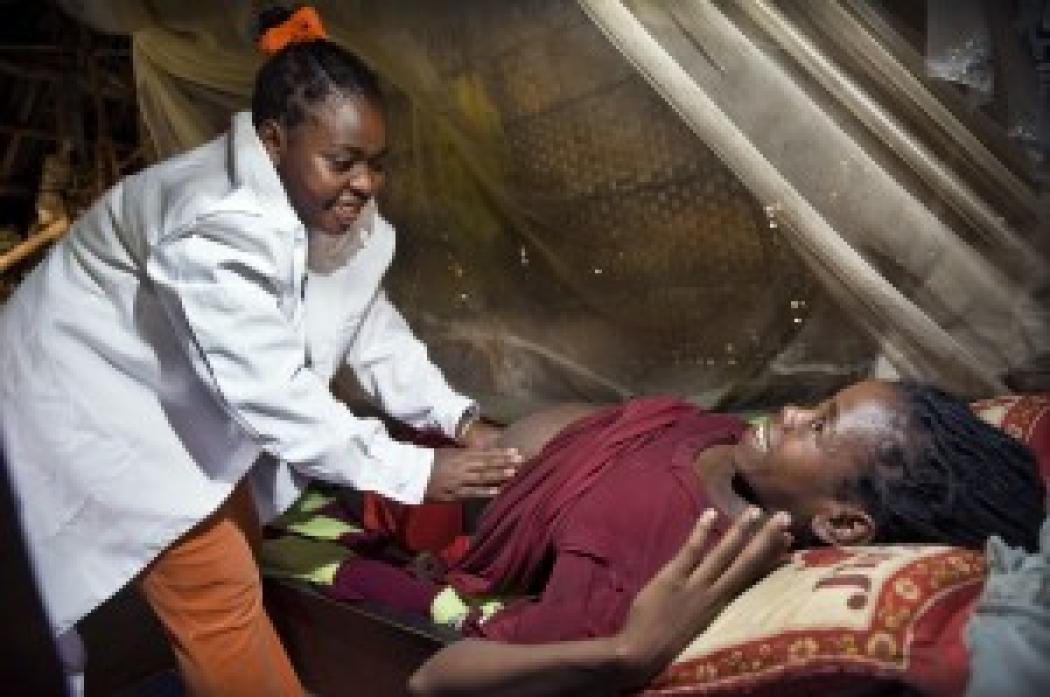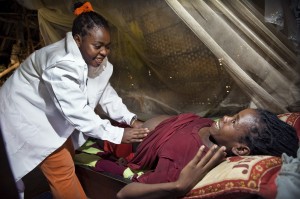Foreign Aid Cuts Affect Us All

By: Lisa Meadowcroft, AMREF
The final segment of the presidential debates is over. Unfortunately, not much was said about the importance and impact of US aid to developing countries. We all know that the global economic climate is tough and it’s unreasonable to expect any increases in foreign aid. But what we can expect and hope will come to pass no matter who is in elected President next month, is that foreign assistance for global health and humanitarian aid will not be cut disproportionately.
Such drastic cuts would be ruinous. In fact, they would cost lives.
In their July 2012 issue brief on the human impact of potential, substantial budget cuts on global health, The Foundation for AIDS Research (amfAR) found that, “applying sequestration cuts to US government global health programming would have minimal impact on deficit reduction, but would be devastating to the lives of many thousands of people globally.”
In the key areas of HIV/AIDS, TB and malaria alone, which are not only high priority for AMREF but sectors where frontline health workers have critical impact on the millions of people who depend on them the world over, the amfAR brief notes that cutting by US government support of 8.2 percent :
- HIV/AIDS treatment for 276,500 people will not be available, potentially leading to 63,000 more AIDS-related deaths and 124,000 more children becoming orphans
- An additional 100,000 people will not be treated for HIV/AIDS
- 2.2 million fewer insecticide-treated nets will be procured, leading to nearly 6,000 deaths due to malaria; 3.6 million fewer people will receive treatment
- 88,000 fewer TB patients will receive treatment, leading to 11,000 more TB deaths.
And the list goes on.
Compare this though to the great strides AMREF, along with other NGOs operating in the global health arena in the developing world, have made over the last 10 years. Strides in both improving health outcomes and creating sustainable change by partnering with frontline health workers and their communities to give them the skills, knowledge and means to improve their own health.
As a result of the U.S. commitment to health in Africa alone, according to USAID’s Africa Bureau, “more children are living to see their first birthday, fewer people are dying from curable diseases like malaria and tuberculosis, and more communities have access to safe drinking water. Two million Africans now benefit from life-saving HIV treatment and another 10 million people living with AIDS are receiving care through PEPFAR.”
Health improvement in developing countries is not only critical to the populations of African countries, it’s also key to US interests abroad. Improved health results in larger labor forces and greater educational opportunities, leading to more stable economies and the potential for growth. Stronger economies usually promote more stable political systems. Stable political systems and strong economies in Africa are in the strategic interests of the US to promote peace overall and increase our trade opportunities around the globe.
What’s more, Americans are genuinely moved to help ameliorate human suffering – and according to a recent poll by the Better World Campaign, three out of four say that international issues influence their vote. We Americans want and expect the US to do its fare share around the world. In the next Presidential administration, we can’t cut foreign aid. We will all feel the consequences.
AMREF, along with our colleagues in the Frontline Health Workers Coalition, see the impact of US aid in our work in Africa on a daily basis. http://www.amref.org/what-we-do/train-health-workers/
Because of the support of the US government, frontline health workers like Esther Madudu, a Ugandan midwife, receives advanced training to upgrade her skills, enabling her provide the emergency obstetric care needed to reduce preventable maternal deaths. http://www.amrefusa.org/news-from-the-field/news/amrefs-commitment-to-better-maternal-health-in-africa/
We see education programs in Tanzania that teach adolescent girls about their sexual and reproductive rights – helping create more gender parity and reduce unwanted teenage pregnancies. http://pinterest.com/sihibayusufu/
Young Maasai women in northern Kenya learn that there are alternative rites of passage to female genital cutting, which in the past has led to so much trauma and even death for those women when they reach child bearing age.
And we see senior health care professionals from all over sub-Saharan Africa participate in advanced management training provided by AMREF and partners so they can master the skills needed to run hospitals and busy health care facilities.
And the list goes on. In fact, this is the list that we should all want to go on and on and on.

